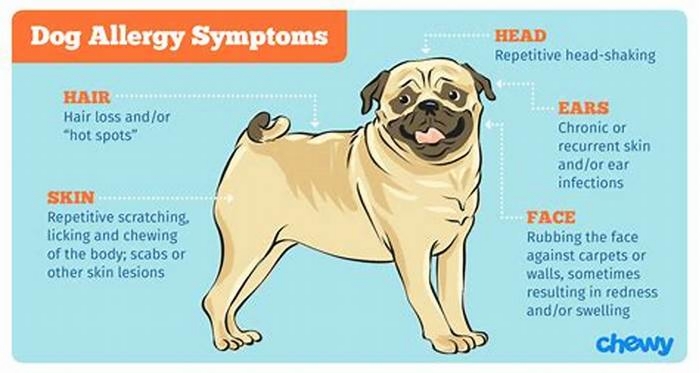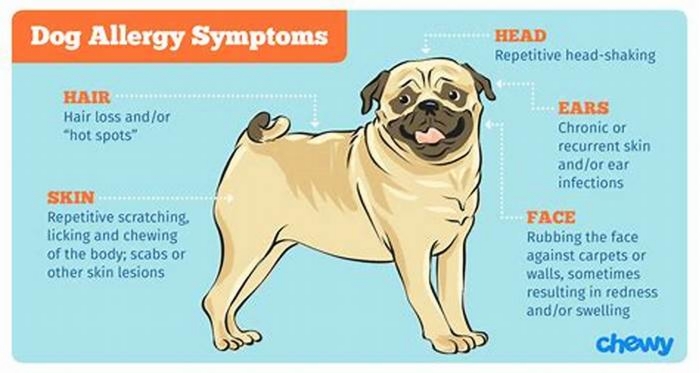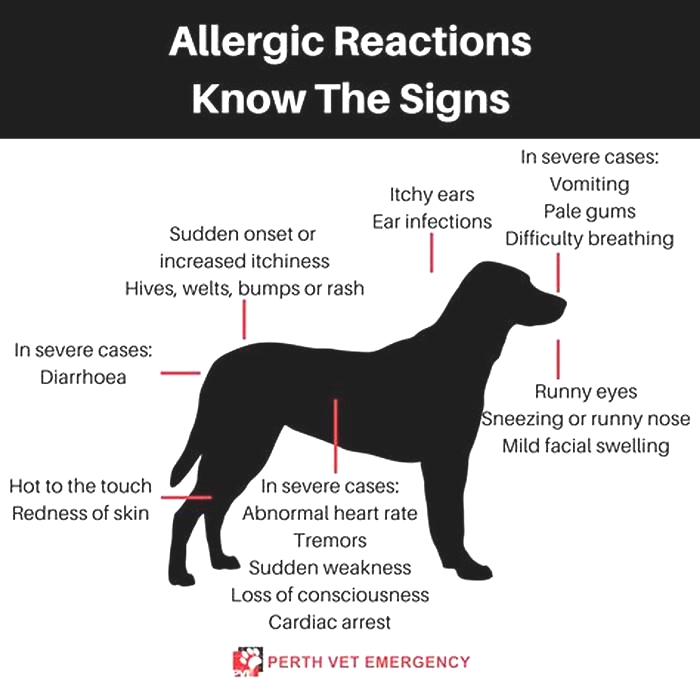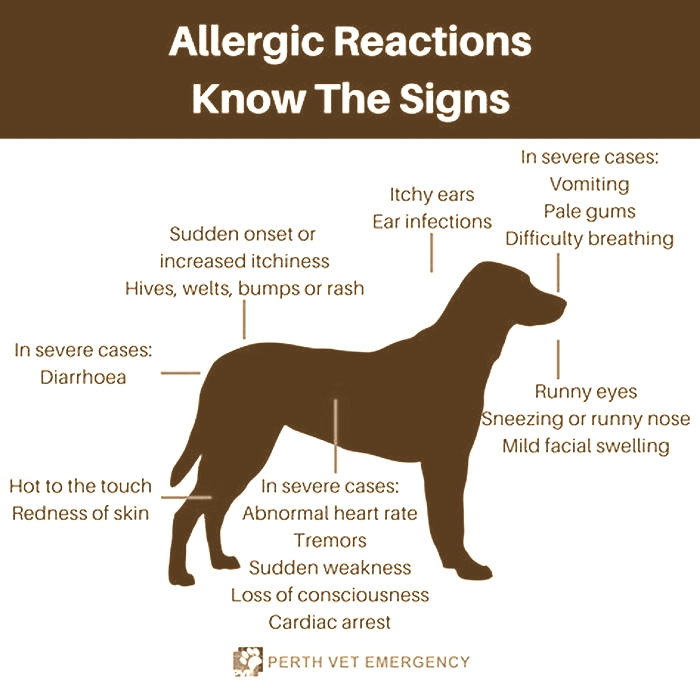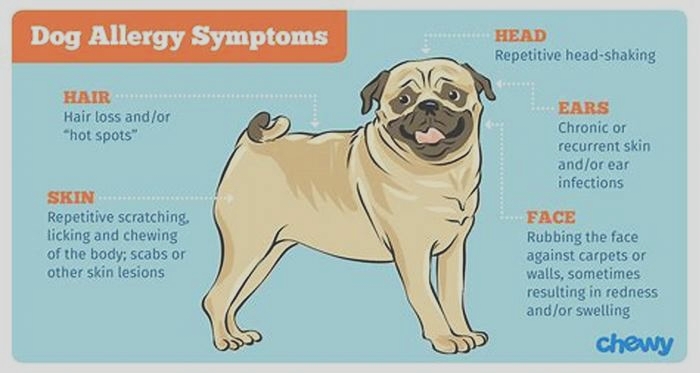How can I treat my dogs allergic reaction naturally
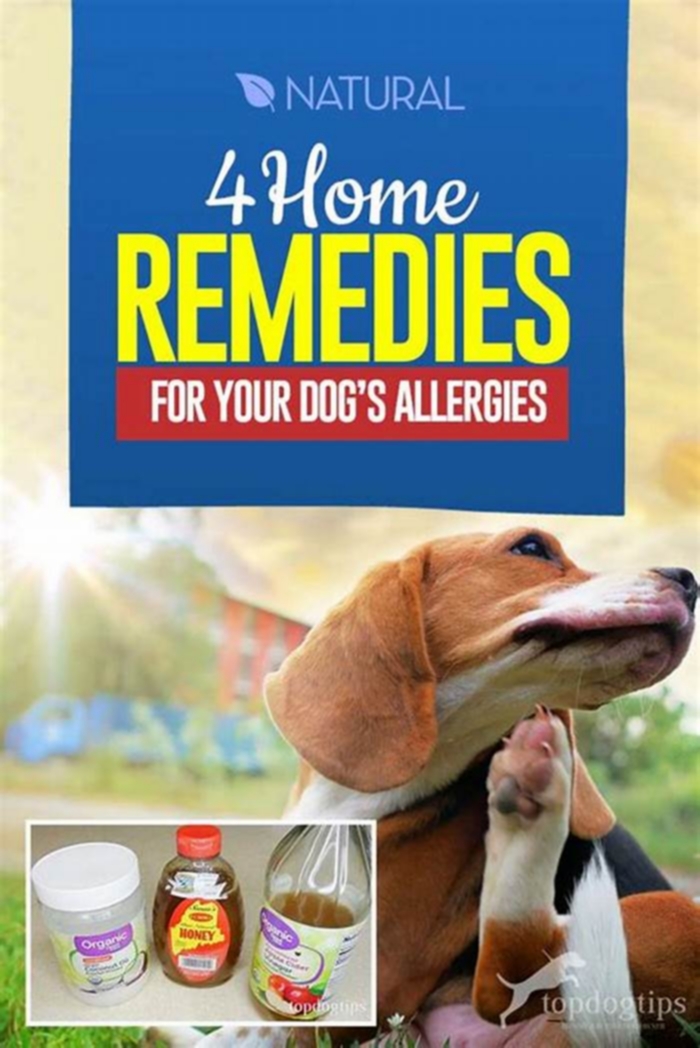
Dog Allergies: What You Need to Know
Allergies are quite common in dogs of all breeds and backgrounds. They occur when a dogs immune system has a hyper-reaction to a foreign substance, such as pollen, flea saliva, vaccines, spider bites, bee stings, or even certain foods that normally would cause little or no reaction in most dogs.
We suspect certain dog allergies, such as atopy or allergies to pollens and plants, are primarily hereditary in basis. Most of these dogs begin to show allergic signs between 1-3 years of age, often after they have previously been exposed to the underlying cause. While most allergies cant be cured, the goal is to manage them with treatments that can help relieve or control a dogs allergic symptoms.
Signs That Your Pet Might Have Dog Allergies
The signs of allergies vary depending on the type of allergic reaction a dog is experiencing and can vary from dog to dog. Most allergic signs in are dermatologic, which can range from itching and inflammation of the skin, feet and ears, to hives and possibly swelling of the face. Some allergic dogs can have clear watery eyes and nose, as well as sneezing.
Gastrointestinal signs can also occur such as vomiting and/or diarrhea with or without blood. In rarer cases, a much more severe and different allergic reaction called an anaphylactic reaction can occur. This is an immediate type of hypersensitivity and leads to a potentially life-threatening situation where a dog can acutely collapse due to shock and a severe drop in blood pressure.
Types Of Allergies Your Dog Might Have
There are several common types of allergies in dogs, including:
- Fleas: Reaction to the protein in flea saliva, not the actual fleas. Therefore, a dog with only one flea can still have an extensive systemic allergic reaction due to their bodys reaction to just that one fleas saliva.
- Canine Atopic Dermatitis: Also known as atopy or atopic dermatitis (AD), this is a very common canine allergy. This is usually an inherited predisposition to develop allergic symptoms after exposure to relatively common substances or allergens in the air such as pollens, grasses, weeds, molds, or fungi. Common signs of atopy are itching and inflammation in a dog often seen in the underarms, groin, face and feet. Atopy is often seasonal.
- Food Allergies: Allergies to food can manifest with a chronic skin condition such as flaky, itching skin, chronic licking or biting of the paws, or chronic ear infections (often with secondary opportunistic bacterial or yeast infections). Dogs can develop allergies to a food or substance over a period of time, even if they may have had no previous issues with that food substance or protein.
- Contact Allergies: Contact allergies are found when a dog has direct contact with a caustic surface or chemical, causing severe irritation to the skin. Household cleaners, carpet cleaners, fertilizers, topical medication, and essential oils may all potentially cause a contact allergy.
- Bacterial Hypersensitivity: Bacterial hypersensitivity occurs when a dogs immune system overreacts to the normal bacterial flora on their skin. This often occurs when other health conditions are present, such as hypothyroidism, inhalant allergy, and/or flea allergy.
Diagnosis And Treatment of Your Dogs Allergies
The best method of controlling allergies is to know what the allergen is and to avoid it or control it. Your veterinarian can perform an extensive examination with history to try to help determine the most likely cause and formulate a practical treatment plan. The gold standard for diagnosing allergies in dogs is immunotherapy or allergy testing to determine the actual cause of the allergic response and to tailor an allergen-specific immunotherapy (ASIT).
There are several options for treating your dogs allergies, including:
- Flea Prevention: Flea prevention is obvious, relatively easy, and will help dogs who suffer from allergies to fleas. Flea eradication through an extensive anti-parasitic protocol may be necessary to improve the allergy sufferer.
- Antihistamines: This treatment is generally inexpensive and safe with few side effects, but different types can have variable effects and dont work on all dogs.
- Medications: Cortisone products have been commonly used in the past with good effects on allergy sufferers, but these types of medications are not without side effects, so they need to be used judiciously and only for shorter periods of time. Newer medications such as cyclosporines (Atopica), Apoquel (an immunomodulatory), and Cytopoint (an immunotherapeutic) are currently being used extensively by clinicians with good results to minimalize the severe itching response the dog gets from allergies.
- Dietary Changes/Hypoallergenic Diets: Dairy, beef, and wheat can be responsible for up to 80% of food allergies in dogs. Hypoallergenic diets utilize one novel protein (or only one new protein in a diet) as the protein source. Most pets with food allergies respond well when switched to a store-bought hypoallergenic diet, but occasionally an animal suffers from such extreme allergies that a homemade diet is the only option. In this case, the diet should be customized with the aid of a veterinarian, veterinary dermatologist, or veterinary nutritionist.
- Environmental and External Aids: Air purifiers can help reduce certain molds. Dust and pollens are best controlled by using an air cleaner with a high-efficiency particulate air (HEPA) filter. Air conditioning can also reduce circulating amounts of airborne allergens because windows are then kept closed.
- Medicated Baths and Supplements: Many medicated dog shampoos have compounds in them that are aimed at soothing the injured skin and skin barrier and calming inflammation. In addition, frequent bathing (weekly to every other week) can remove allergens from the coat, which may contribute to skin allergy flare-ups. These shampoos are often prescribed by your veterinarian, and directions for use should always be read completely and followed explicitly.
- Supplements: Omega-3 and Omega-6 essential fatty acid supplements can be considered by your veterinarian. These fatty acids are naturally anti-inflammatory and anti-oxidative agents.
- Antibiotics and Antifungal Medications: Antibiotics are frequently needed to treat secondary skin infections. Anti-fungal medications are frequently needed to treat secondary yeast infections.
Each possible allergy treatment has its advantages and drawbacks. Finding the source of your dogs allergy and discussing a specific treatment plan with your veterinarian is recommended.
12 home remedies for dogs with itchy skin
Your dogs skin allergy symptoms may vary from mild to severe, and early veterinary intervention is essential to treat those more serious conditions. Below are 12 vet-approved ways you can help soothe canine itchiness and discomfort from home.
1. Use salmon oil supplements to add omega-3 fatty acids to your dogs diet
Salmon oil has many benefits including keeping your dogs skin and coat healthy. Its a great source of omega-3 fatty acids which have anti-inflammatory properties. If your pup has skin allergies ff, try our favorite salmon oil-based supplement: Premium Cares Omega Chews. If your dog has dandruff, adding an omega-3 fatty acid to their diet is one of the best ways to treat it. Note that it may take 4-6 weeks of use to see results.
2. Use dog shampoos with oatmeal, aloe vera, or chamomile
Your dog needs regular baths with warm water to stay clean. Use this opportunity to help soothe dry skin by using a formulated shampoo. Giving weekly baths can actually cause dry skin and itchiness, so try to bathe your dog at least 2 weeks apart.
Choose a pet shampoo that contains oatmeal, aloe vera, or chamomile as these ingredients help with itching. Weve rounded up some of the best shampoos for dry itchy skin to help you find the right product for your dogs allergies and skin type.
To prevent your dog from licking any ingredients, rinse them well after shampooing. Washing all the residue off can also relieve itchiness.
3. Consider an herbal tea bath
If your dog is itchy with patchy, dry skin, consider the anti-inflammatory properties of green, chamomile, or calendula tea to soothe their discomfort. Soak three to four tea bags of tea for five minutes in lukewarm water before placing your dog into the bathtub or, if you only want to target affected areas of smaller, itchy dry patches, steep one or two tea bags in hot water, let it cool and apply the water to your dogs skin without rinsing.
Note that chamomile, when ingested in large amounts for long periods of time, can lead to a range of medical problems, including gastrointestinal upset and bleeding issues. Aloe vera also contains a toxin called saponin that, when ingested, may cause severe vomiting, diarrhea, and low blood sugar.
4. Soothe your dog with oatmeal
Oatmeal has been known to soothe dry, itchy skin in dogs. Though many dog shampoos already contain oatmeal, you can create colloidal oatmeal or finely ground oats and mix them into skin care products like lotions and creams or even add them to bathwater.
5. Use a balm to moisturize patches of dry skin
Dry skin often causes itching, so when you combine that with allergy symptoms your dog may continue to scratch. This is why you should keep your dogs skin hydrated. If your dog has only patches of dry skin or hot spots, try a dog balm for the affected areas, such as Natural Dog Companys Skin Soother. Avoid using coconut oil as a moisturizer as it may not be the best option for your dog. When coconut oil is used on hot spots, it can cause too much moisture and make hot spots worse.
Though some may use apple cider vinegar for a slew of home remedies, apple cider vinegar is not recommended on raw skin as it tends to be acidic and thus may cause discomfort and further irritation.
6. Try manuka honey to reduce inflammation
Manuka honey may reduce inflammation and help doggie allergies. This is one tasty treat you can share with your pup! Some researchers believe honey contains many types of pollens. If a dog eats the honey, it may help desensitize the dog to certain types of pollen. They may enjoy the sweet taste while their allergy symptoms improve. You can also use manuka honey to treat woundsTrusted SourcePubMed CentralArchive of biomedical and life sciences journal literature.Go to source, but your dog might try to lick it off, so supervise them when using it
7. Use dietary supplements to manage symptoms
If your dog is suffering from allergies, they may benefit from supplements that contain vitamin C, spirulina (another great source of omega-3s), bee pollen, and apple cider vinegar. Like any other dietary supplement you might offer your pup, dont try one of our favorites without having a chat with your vet first. You shouldnt combine some supplements and medications, so always make sure the supplement you want to offer will not have any interactions with any meds your dog may be on first.
8. Dont forget to wipe your dogs paws after outdoor time
Allergies caused by environmental irritants can lead to inflamed, itchy, pink or red rashes of dermatitis between your dogs toes, especially during the spring and summer months when sweat combines with environmental irritants like ragweed, grasses, foxtails, or dust mites. Exposure to ice and snow in the colder months can also leave your pups paws dry, cracked, and itchy.
Common environmental factors that can cause itchy paws
- Grasses
- Ragweed
- Dust mites
- Pollen
- Mold
- Fertilizers, pesticides, and herbicides
- Ice and snow
9. Remove indoor allergens
If your pup is suffering from allergies, check for culprits within the home. You may need to eliminate:
- Dust
- Cigarette smoke
- Certain cleaning products
- Chemical fragrances like those found in laundry detergent and scented candles
10. Invest in a humidifier and keep an eye on indoor temps
Extreme heat or cold can also trigger allergy symptoms in pets, so its important to maintain the temperature in your home. Another thing to consider is humidity levels. If the air in your home is too dry, it can cause your dog to have dry skin, which can intensify the itching. So invest in a humidifier if you need one. Plus, this can also benefit the humans in your home as well.
11. Keep up with flea and tick preventatives
Since dogs can be allergic to flea and tick bites, its important to prevent your dog from bug bites before they start. Chat with your vet about using monthly flea and tick preventatives, which typically come in a topical or an oral form. It is rare for dogs to be allergic to both forms, so if you notice an allergic reaction to one form of preventative, it is unlikely they will react to the other.
Its up to you to make sure youre administering these treatments as directed. Missed doses can cause the preventatives to not work, putting your pup at risk for bites and the issues that come with them.
12. DIY dog anti-itch spray
One way you can help your dogs irritated, dry skin is to make a DIY anti-itch spray, either with colloidal oatmeal to soothe inflamed, hot skin; coconut oil for dry and itchy skin; or peppermint, chamomile, and green teas to cool raw, rot skin. You can keep a small spray bottle handy to apply throughout the day.


